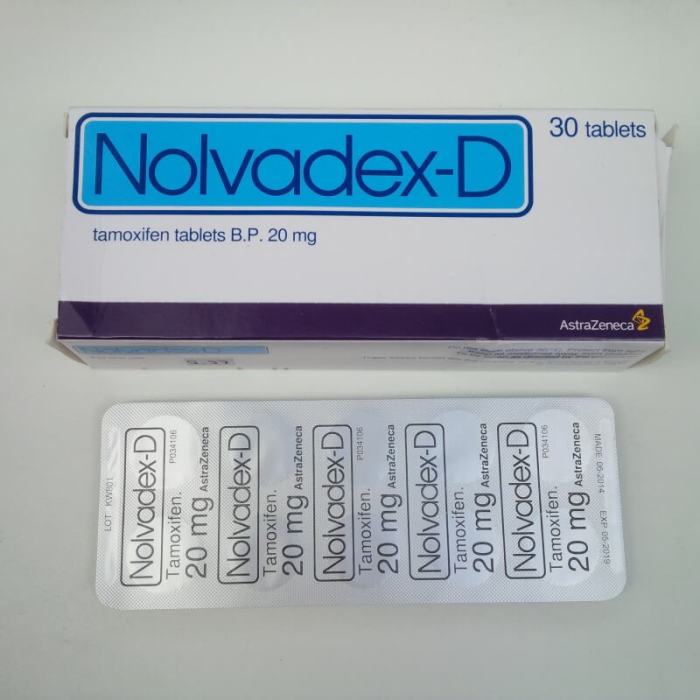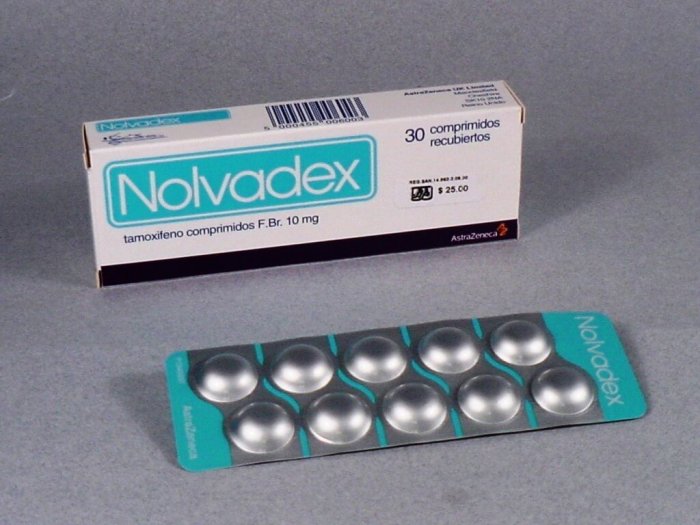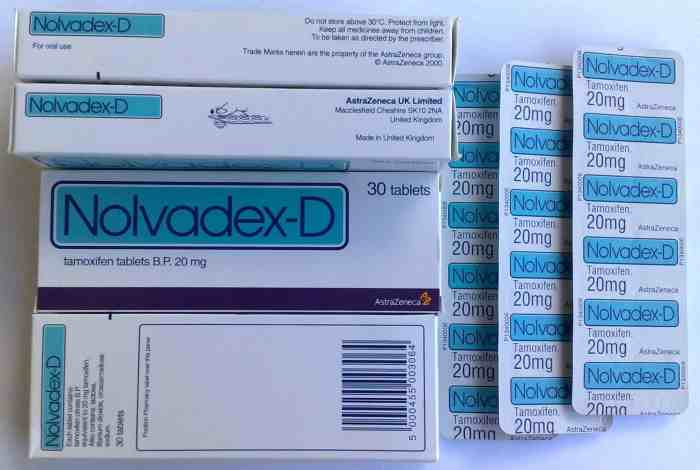Nolvadex, a Selective Estrogen Receptor Modulator (SERM), has garnered significant attention for its diverse therapeutic applications. This medication, also known as tamoxifen, exerts its effects by selectively modulating estrogen receptors, influencing various physiological processes in the body. From its role in breast cancer treatment to its potential applications in managing gynecological conditions and enhancing male fertility, Nolvadex has emerged as a multifaceted drug with a wide range of clinical uses.
Nolvadex’s mechanism of action involves binding to estrogen receptors, acting as an antagonist in some tissues and an agonist in others. This selective modulation allows for targeted therapeutic effects, minimizing potential side effects associated with traditional estrogen therapy. The drug’s versatility has made it a valuable tool in managing a variety of medical conditions, leading to ongoing research exploring its potential for treating other health concerns.
Nolvadex

Nolvadex, also known as tamoxifen, is a medication that acts as a selective estrogen receptor modulator (SERM). SERMs are a class of drugs that bind to estrogen receptors, but their effects vary depending on the tissue type and the specific receptor involved.
Mechanism of Action
Nolvadex exerts its effects by binding to estrogen receptors, specifically estrogen receptor alpha (ERα) and estrogen receptor beta (ERβ). These receptors are found in various tissues throughout the body, including the breast, uterus, bone, and liver.
- In some tissues, such as the breast, Nolvadex acts as an estrogen antagonist, blocking the action of estrogen. This means that it prevents estrogen from binding to its receptors, effectively reducing the growth-promoting effects of estrogen.
- In other tissues, such as the bone, Nolvadex acts as an estrogen agonist, mimicking the actions of estrogen. This can lead to increased bone density and reduced risk of osteoporosis.
The ability of Nolvadex to act as both an agonist and antagonist depends on the specific tissue and the concentration of estrogen present.
Therapeutic Uses
Nolvadex has been approved for a range of medical conditions, including:
- Breast Cancer: Nolvadex is a mainstay treatment for estrogen receptor-positive breast cancer. It is used to prevent the recurrence of breast cancer in women who have already been treated for the disease. Nolvadex is also used as adjuvant therapy after surgery to reduce the risk of cancer returning.
- Prevention of Breast Cancer: Studies have shown that Nolvadex can reduce the risk of breast cancer in women at high risk for the disease, such as those with a family history of breast cancer or those with certain genetic mutations.
- Infertility: In some cases, Nolvadex can be used to treat infertility in women with polycystic ovary syndrome (PCOS). It can help to regulate ovulation and improve fertility.
- Gynocomastia: Nolvadex can be used to treat gynecomastia, a condition in which men develop breast tissue. It is thought to work by blocking the effects of estrogen in the breast tissue.
Nolvadex in Gynecological Conditions
Nolvadex, also known as tamoxifen, is a selective estrogen receptor modulator (SERM) primarily used for treating breast cancer. However, its ability to modulate estrogen activity has led to investigations into its potential use in managing certain gynecological conditions. This section explores the application of Nolvadex in treating endometriosis and uterine fibroids, examining both its potential benefits and limitations.
Nolvadex in Endometriosis
Endometriosis is a condition where tissue similar to the lining of the uterus grows outside the uterus, causing pain, infertility, and other complications. Nolvadex has been studied for its potential to alleviate endometriosis symptoms by reducing estrogen levels, which can contribute to the growth of endometrial tissue.
The potential benefits of Nolvadex in endometriosis include:
- Pain reduction: Nolvadex can help reduce pelvic pain associated with endometriosis by decreasing the size and activity of endometrial implants.
- Improved fertility: While not a direct treatment for infertility, Nolvadex can potentially improve fertility by reducing the impact of endometriosis on the reproductive system.
- Reduced need for surgery: In some cases, Nolvadex may delay or even eliminate the need for surgical intervention to treat endometriosis.
However, Nolvadex is not without its limitations in the context of endometriosis.
- Side effects: Like other medications, Nolvadex can cause side effects, including hot flashes, vaginal dryness, and an increased risk of blood clots.
- Limited effectiveness: Nolvadex may not be effective for all women with endometriosis, and its long-term efficacy remains under investigation.
- Not a cure: Nolvadex does not cure endometriosis; it primarily manages symptoms and may not prevent the condition from recurring.
Nolvadex in Uterine Fibroids
Uterine fibroids are noncancerous growths in the uterus that can cause heavy bleeding, pain, and infertility. Nolvadex has been explored as a potential treatment option for uterine fibroids due to its ability to reduce estrogen levels, which can contribute to fibroid growth.
The potential benefits of Nolvadex in uterine fibroids include:
- Reduced fibroid size: Nolvadex can help shrink fibroids by reducing estrogen levels, potentially alleviating symptoms associated with fibroids.
- Improved bleeding: Nolvadex may help reduce heavy menstrual bleeding caused by fibroids.
- Delayed surgery: In some cases, Nolvadex may delay or eliminate the need for surgical intervention to remove fibroids.
However, Nolvadex also has limitations in the context of uterine fibroids.
- Side effects: As with endometriosis, Nolvadex can cause side effects such as hot flashes, vaginal dryness, and an increased risk of blood clots.
- Variable effectiveness: Nolvadex may not be effective for all women with uterine fibroids, and its long-term efficacy remains under investigation.
- Not a cure: Nolvadex does not cure uterine fibroids; it primarily manages symptoms and may not prevent fibroids from recurring.
Nolvadex Treatment Summary
The following table summarizes key features of Nolvadex treatment for various gynecological conditions:
| Condition | Potential Benefits | Limitations |
|---|---|---|
| Endometriosis | Pain reduction, improved fertility, reduced need for surgery | Side effects, limited effectiveness, not a cure |
| Uterine Fibroids | Reduced fibroid size, improved bleeding, delayed surgery | Side effects, variable effectiveness, not a cure |
Nolvadex in Male Fertility and Sports Performance
Nolvadex, also known as tamoxifen, is a selective estrogen receptor modulator (SERM) primarily used for treating breast cancer in women. However, it has also gained attention for its potential applications in male fertility and sports performance. This section will explore the use of Nolvadex in these contexts, examining both its potential benefits and associated risks.
Nolvadex and Male Fertility
Nolvadex can play a role in improving male fertility by addressing estrogen-related issues. Estrogen, while essential for various bodily functions, can negatively impact sperm production and quality when present in excessive amounts. Nolvadex, by blocking estrogen receptors, helps to regulate estrogen levels and improve sperm parameters.
- Improved Sperm Count and Motility: Studies have shown that Nolvadex can increase sperm count and motility in men with low sperm production due to elevated estrogen levels.
- Enhanced Sperm Morphology: Nolvadex can also improve the shape and structure of sperm, leading to a higher percentage of normal sperm.
It’s important to note that Nolvadex is not a guaranteed solution for infertility. Consult with a healthcare professional to determine if Nolvadex is appropriate for your specific situation.
Nolvadex and Sports Performance
The use of Nolvadex in sports performance enhancement is controversial. Some athletes and coaches believe that Nolvadex can help improve muscle growth and recovery by reducing estrogen levels, which can inhibit testosterone production. However, there is limited scientific evidence to support these claims.
- Potential Benefits: Some athletes may experience increased muscle mass and strength, and potentially faster recovery from strenuous exercise.
- Potential Risks: Nolvadex can have adverse effects on liver function, increase the risk of blood clots, and lead to hormonal imbalances. Furthermore, its use in sports is considered doping, which can result in severe penalties.
It’s crucial to understand that using Nolvadex for sports performance enhancement is unethical and potentially dangerous. Athletes should prioritize their health and well-being and focus on safe and ethical training methods.
Potential Benefits and Risks of Nolvadex Use
| Context | Potential Benefits | Potential Risks |
|---|---|---|
| Male Fertility | Improved sperm count, motility, and morphology. | Hormonal imbalances, liver problems, blood clots, and potential for reduced sperm production in the long term. |
| Sports Performance | Increased muscle mass, strength, and potentially faster recovery. | Liver damage, blood clots, hormonal imbalances, and potential for severe penalties due to doping. |
Nolvadex Side Effects and Interactions

Nolvadex, like all medications, can cause side effects. These can range from mild and temporary to serious and potentially life-threatening. It’s crucial to understand the potential side effects and to be aware of any drug interactions that might occur. This information can help you make informed decisions about your health and treatment.
Common Side Effects
Common side effects are those that occur in more than 1 in 100 people taking Nolvadex. These side effects are usually mild and tend to go away on their own.
- Hot flashes
- Nausea
- Vomiting
- Headache
- Fatigue
- Fluid retention
- Muscle pain
- Joint pain
Rare Side Effects
Rare side effects are those that occur in less than 1 in 100 people taking Nolvadex. These side effects are usually more serious and may require medical attention.
- Blood clots
- Stroke
- Heart attack
- Liver problems
- Vision changes
- Seizures
- Depression
- Allergic reactions
Drug Interactions
Nolvadex can interact with other medications, including:
- Blood thinners: Nolvadex can increase the risk of bleeding when taken with blood thinners like warfarin.
- Certain antibiotics: Some antibiotics, such as erythromycin and clarithromycin, can increase the levels of Nolvadex in the body, potentially leading to an increased risk of side effects.
- Anti-fungal medications: Antifungal medications like ketoconazole and itraconazole can also increase the levels of Nolvadex in the body, potentially leading to an increased risk of side effects.
- Certain medications for HIV: Some medications used to treat HIV, such as ritonavir and indinavir, can also increase the levels of Nolvadex in the body, potentially leading to an increased risk of side effects.
Severity and Frequency of Side Effects
Here is a table summarizing the severity and frequency of different side effects associated with Nolvadex use:
| Side Effect | Severity | Frequency |
|---|---|---|
| Hot flashes | Mild | Common |
| Nausea | Mild | Common |
| Vomiting | Mild | Common |
| Headache | Mild | Common |
| Fatigue | Mild | Common |
| Fluid retention | Mild | Common |
| Muscle pain | Mild | Common |
| Joint pain | Mild | Common |
| Blood clots | Serious | Rare |
| Stroke | Serious | Rare |
| Heart attack | Serious | Rare |
| Liver problems | Serious | Rare |
| Vision changes | Serious | Rare |
| Seizures | Serious | Rare |
| Depression | Serious | Rare |
| Allergic reactions | Serious | Rare |
Nolvadex Dosage and Administration

Nolvadex (tamoxifen) is typically administered orally, usually once or twice daily. The dosage and frequency of administration depend on the specific medical condition being treated. It’s crucial to follow your doctor’s instructions carefully regarding dosage and administration.
Dosage Guidelines
The recommended dosage of Nolvadex varies depending on the medical condition being treated. Here’s a table outlining the typical dosages for different conditions:
| Medical Condition | Dosage | Frequency |
|---|---|---|
| Breast Cancer (adjuvant therapy) | 20 mg | Once daily |
| Breast Cancer (prevention) | 20 mg | Once daily |
| Gynecological Conditions (e.g., endometriosis) | 10-20 mg | Once or twice daily |
| Male Fertility (e.g., oligospermia) | 20 mg | Once daily |
Factors Influencing Dosage Adjustments
Several factors can influence dosage adjustments, including:
- Patient’s age and weight: Dosage may be adjusted based on the patient’s age and weight. Younger or lighter individuals may require lower dosages.
- Severity of the condition: The severity of the medical condition being treated can influence dosage adjustments. More severe conditions may require higher dosages.
- Liver function: If the patient has impaired liver function, the dosage may need to be adjusted. The liver is responsible for metabolizing Nolvadex, so impaired liver function can affect its effectiveness.
- Individual response: Some patients may respond better to lower dosages than others. Dosage adjustments may be made based on the individual patient’s response to treatment.
- Drug interactions: Nolvadex can interact with other medications. If the patient is taking other medications, the dosage may need to be adjusted to minimize the risk of interactions.
Nolvadex and Lifestyle Modifications
While Nolvadex is a powerful medication, it’s crucial to remember that lifestyle changes can significantly enhance its effectiveness and contribute to overall well-being. Adopting a healthy lifestyle can support your body’s natural processes, promoting better outcomes during treatment.
Diet
A balanced diet plays a crucial role in overall health and can significantly impact Nolvadex treatment. Here are some dietary recommendations:
- Consume a variety of fruits and vegetables: They are rich in antioxidants and essential vitamins and minerals that support overall health and can potentially enhance Nolvadex’s effectiveness.
- Choose lean protein sources: Lean protein sources like fish, poultry, beans, and tofu are essential for muscle maintenance and overall health, contributing to better treatment outcomes.
- Limit processed foods and sugary drinks: These foods can contribute to inflammation and weight gain, potentially interfering with Nolvadex’s effectiveness.
- Stay hydrated: Drinking plenty of water helps flush out toxins and supports overall bodily functions, enhancing treatment efficacy.
Exercise
Regular physical activity offers numerous health benefits and can complement Nolvadex treatment:
- Engage in moderate-intensity exercise: Aim for at least 30 minutes of moderate-intensity exercise most days of the week. This could include brisk walking, cycling, swimming, or dancing.
- Strength training: Include strength training exercises at least twice a week to maintain muscle mass and improve overall fitness.
- Listen to your body: It’s essential to listen to your body and avoid overexertion, especially during treatment.
Stress Management
Chronic stress can negatively impact health and potentially interfere with Nolvadex treatment. Here are some stress management techniques:
- Practice relaxation techniques: Techniques like deep breathing, meditation, and yoga can help reduce stress and promote relaxation.
- Get enough sleep: Aim for 7-8 hours of quality sleep each night.
- Engage in enjoyable activities: Make time for hobbies and activities you enjoy to reduce stress and improve overall well-being.
Key Lifestyle Factors Enhancing Nolvadex Effectiveness
| Lifestyle Factor | Benefits |
|---|---|
| Balanced Diet | Provides essential nutrients, supports overall health, and potentially enhances Nolvadex effectiveness. |
| Regular Exercise | Improves cardiovascular health, strengthens muscles, and can potentially enhance treatment outcomes. |
| Stress Management | Reduces stress levels, promotes relaxation, and can potentially improve Nolvadex’s effectiveness. |
| Adequate Sleep | Supports overall health, promotes hormone balance, and can potentially enhance treatment efficacy. |
Nolvadex’s unique ability to selectively modulate estrogen receptors has made it a valuable therapeutic option for various medical conditions. While its efficacy in breast cancer treatment has been well-established, research continues to explore its potential in other areas, including gynecological conditions, male fertility, and sports performance. However, it’s crucial to acknowledge the potential side effects and interactions associated with Nolvadex, emphasizing the importance of careful monitoring and personalized treatment plans under the guidance of healthcare professionals. As research continues to unravel the intricate mechanisms of action and clinical applications of Nolvadex, its role in modern medicine is poised to expand further, offering hope for a wider range of patients seeking effective treatment options.
Nolvadex, often used for breast cancer treatment, is a selective estrogen receptor modulator (SERM). It works by blocking estrogen from binding to receptors in certain tissues, such as breast tissue. While Nolvadex is primarily associated with breast cancer, it’s interesting to note that the drug morphine , a powerful opioid analgesic, has also been studied for its potential use in treating certain types of breast cancer.
However, Nolvadex remains a crucial component in the management of estrogen-receptor-positive breast cancer, and its role in this area continues to be investigated and refined.